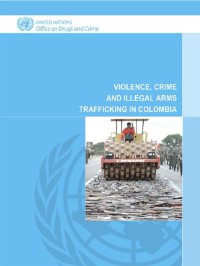By Geneva Small Arms Survey
The Small Arms Survey 2012: Moving Targets looks at what is changing, and not changing, in relation to armed violence and small arms proliferation. Chapters on firearm homicide in Latin America and the Caribbean, drug violence in selected Latin American countries, and non-lethal violence worldwide illustrate that security is a moving target; armed violence continues to undermine security and well-being around the world. The goal of curbing small arms proliferation, embodied in the UN Programme of Action, appears similarly elusive. Chapters on illicit small arms in war zones, trade transparency, Somali piracy, and the 2011 UN Meeting of Governmental Experts highlight some of the successes and challenges in this area. Country studies examine Kazakhstan and Somaliland. The final installment of the authorized transfers project looks at the total value of exports and imports globally, including small arms and light weapons, ammunition, and parts and accessories.
Cambridge, UK: Cambridge University Press 2012.





















